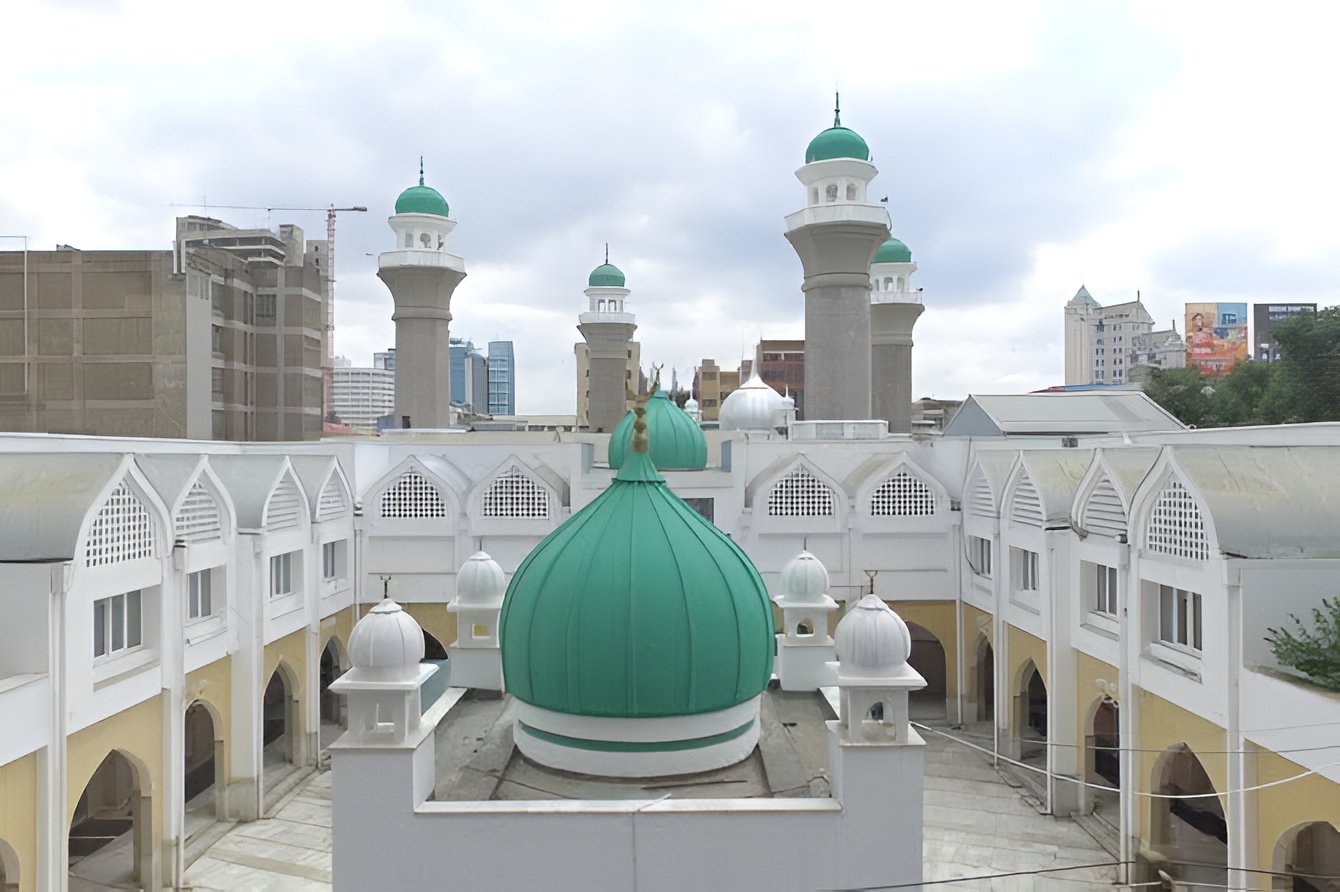Jamia Mosque at 100: Nairobi’s iconic landmark marks a century of faith and resilience

The mosque’s story began in 1902, when Maulana Sayed Abdullah Shah, a respected religious leader, petitioned the colonial government for land to build a mosque.
Nairobi’s Jamia Mosque, one of East Africa’s most recognisable religious landmarks, is celebrating 100 years since its foundation stone was laid. Today marks a century of resilience, vision and unity for Kenya’s Muslim community.
The mosque’s story began in 1902, when Maulana Sayed Abdullah Shah, a respected religious leader, petitioned the colonial government for land to build a mosque.
Shown a map of Nairobi, then little more than swampland, he placed his finger firmly in the centre. When questioned, he responded with characteristic foresight: this would one day be the heart of a great city.
Today, the Jamia Mosque stands at the core of Nairobi’s Central Business District, his prophecy fulfilled.
Although envisioned in 1902, the mosque’s construction only began in 1925, delayed by colonial restrictions that barred Indians and Arabs from owning land in Nairobi, as well as financial hurdles.
The Anjuman Islamia Muslim Association launched a sweeping fundraising drive, with support arriving from across East Africa and as far afield as Durban, South Africa.
Designed by Scottish architect William Landels in the style of Mughal India, the mosque drew inspiration from the grandeur of Delhi’s Jama Masjid and Lahore’s Badshahi Mosque.
Its towering minarets were initially opposed by the Municipal Council, forcing a reduction in height, but the mosque still emerged as Nairobi’s tallest landmark of its era.
The foundation stone was laid in September 1925 by Maulana Sayed Abdullah Shah, following a groundbreaking by Maulana Abdul Momin the previous month.
In March 1926, Sultan Muhammad Shah Aga Khan III placed the skewback stone, further elevating the mosque’s significance within the Muslim world.
Construction was painstaking. Stones were shipped from India via Mombasa, hauled by rail to Nairobi, and carried by hand from the station to the site by Indian railway workers.
Labourers toiled under the constraints of colonial segregation and the hazards of a wild frontier.
After eight years, Jamia Mosque opened its doors on August 18, 1933, in a grand ceremony attended by thousands of Muslims of diverse backgrounds Punjabis, Arabs, Swahilis, Somalis and Nubis.
A procession snaked from what is today the Kenya National Archives to the new mosque, where the Sultan of Zanzibar, Sayyid Khalifa bin Harub, led the inauguration.
The celebrations lasted two days, filled with prayers, sermons, poetry and cultural expressions in Urdu, Arabic and Swahili.
Over the decades, the mosque has expanded multiple times to accommodate Nairobi’s growing Muslim population. It remains the largest mosque in Kenya and a beacon of Islamic heritage in East Africa.
Beyond its role as a house of worship, Jamia Mosque stands as a living monument to the faith, determination and foresight of the community that built it.
A century after its foundation stone was laid, the mosque continues to anchor Nairobi’s skyline and its Muslim identity reminding the city of the vision that transformed a patch of swamp into the beating heart of Kenya’s capital.
